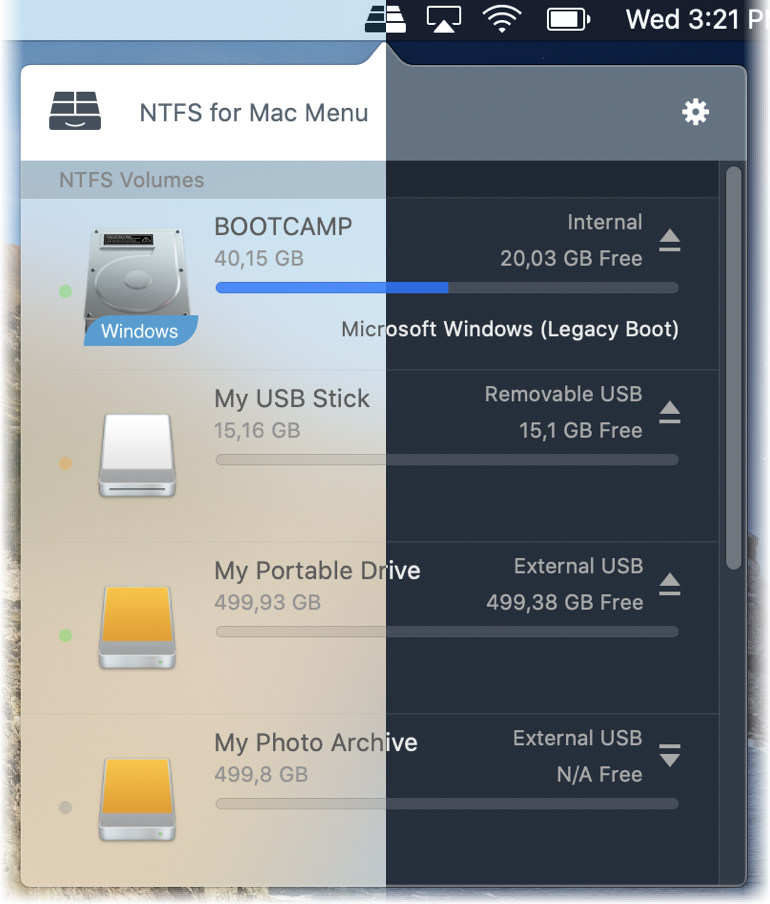
#Ntfs for mac geek mac#
But when you try to transfer a file from your Mac to the external drive, it will halt you immediately. There is no way to say it in any other way but while using your Mac you will be able to use NTFS just to transfer files from the drive to your Mac and read it. What is the Best Way to Read and Write NTFS on Mac? Besides, this is the extensive version of FAT32 and exFAT.
#Ntfs for mac geek windows#
NTFS is more likely used by a majority of people since there are more Windows users than Mac operating systems. Compared to FAT32, the NTFS file format offers almost a limitless size that you might not end up using all of it. The NTFS file format is certainly the latest format that comes as default along with your Windows file. A FAT32 partition must also be less than 8 TB which to some extent limits users to expand their drives according to their needs and preference. As such, individual files on a FAT32 drive can’t be over 4 GB in size-that’s the maximum. Realistically, its size limit is one of the highlighted cons which is why it was replaced with NTFS. FAT32 format was first conceived through Windows 95 to replace its earlier version- FAT16 that was implemented in MS-DOS and Windows 3 (early versions of Windows) operating system. Let’s begin with FAT32, a short form of File Allocation Table 32 since it is one of the oldest file formats.

Hopefully you now know which options above to pick from the list of best formats for external hard drives, which can save your bacon when making the wrong choice can lead to a situation where an external disk just won’t plug-and-play.Difference Between NTFS and FAT32 About FAT32

Picking the wrong one can turn into a real pain when you have to backup and reformat an entire drive because it won’t work for its intended purpose. Picking a format for your external drive can be pretty confusing. In fact, most devices have an internal SD card formatting routine, so we recommend you simply let the intended device format the card. exFAT is still a good choice if your DSLR (for example) supports it, but follow the manufacturer’s recommendation. With SD cards, your choice should be entirely driven by which formats the devices you use support. However, that’s set to change in the future. Of course, if you’re also going to use your thumb drive on your current Linux machine, exFAT won’t work at the time of writing. Especially if you also want to use your thumb drive with iPads, iPhones and Macs.įAT32 is a fallback if you want to use your thumb drive with older devices that don’t support exFAT. Which means you may want to use large files, such as HD video files, on your thumb drive. With the fairly cheap yet large flash drives we have today, there’s some overlap in the use cases for thumb drives and external hard drives. SD cards and USB thumb drives are still an important part of our digital lives, so which formats should you pick?

The choice for the best format for external hard drives involves different considerations compared to other forms of external storage. Unfortunately, Linux does not yet have support for exFAT, but that is reportedly set to change with the release of Kernel 5.4. The most compatible option is FAT32, but as we mentioned above it has a hard 4GB limit on file sizes. However, Linux supports NTFS, which makes for a decent go-between if you have both Windows and Linux machines. Linux has its own proprietary EXT formats and if you are only going to use your external drive with a Linux machine, you can safely go ahead and pick that format. Linux distributions such as Ubuntu Linux are becoming more popular by the day, but are still relatively niche overall.


 0 kommentar(er)
0 kommentar(er)
